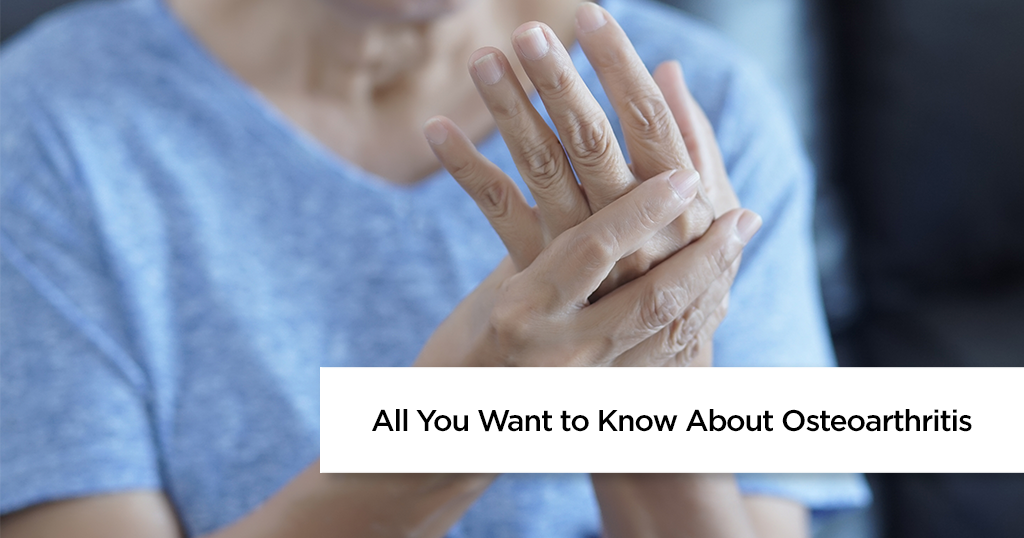

Arthritis is the inflammation and swelling accompanied by tenderness of one or more joints. The most common symptoms of arthritis are joint pain and stiffness, which typically get worse with age. There are various types of arthritis, including Gout, Rheumatoid and Osteoarthritis.
Osteoarthritis, one of the most common joint conditions, is a degenerative joint disease characterized by joint cartilage damage. It occurs when the protective cartilage cushioning the ends of our bones wears down over time. Pain and stiffness are the main symptoms. Osteoarthritis usually affects middle-aged and older people. Although it can damage any joint, this disorder commonly affects joints in the spine, hips, shoulders and knees.
1. Age – Usually osteoarthritis is associated with older adults but can also be found in younger adults but mostly due to trauma
2. Weight – Too much bodyweight on your joints can be stressful for the joints especially the hips, back, and knees
3. Sports Injuries – A sports injury can be a possible cause for osteoarthritis. Ligament injuries, tears ACL or dislocated joints are risk contributing factors to developing future osteoarthritis
4. Genetic predisposition – You are more inclined to suffer from the symptoms if your immediate family including parents or grandparents have suffered from the same
5. Gender – Women are at a greater risk to osteoarthritis
6. Occupation related osteoarthritis – Depending on your daily physical activity at job or home, repetitive physical strain on your joints can cause wear and tear in your cartilage causing joint pain and stiffness
7. Bleeding into the joints due to conditions like haemophilia, or necrosis of a tissue due to decreased blood supply can also be a cause
The symptoms of osteoarthritis are as below
A physical examination will help your specialist evaluate the affected joints for any kind of tenderness or swelling.
Osteoarthritis cannot be reversed, but treatments can reduce pain and help you move better.
Assistive devices like a cane can relieve the stress on your joints. Holding the cane in the hand which is opposite to the leg that is painful might help.
Osteoarthritis impacts the quality of life of an individual as if affects the mobility, causing pain and stiffness in joints. However, symptomatic treatment and lifestyle changes can help you cope better
© Copyright 2024. Apollo Hospitals Group. All Rights Reserved.
 +91 8069991061
Book Health Check-up
Book Health Check-up
Book Appointment
Book Appointment
+91 8069991061
Book Health Check-up
Book Health Check-up
Book Appointment
Book Appointment